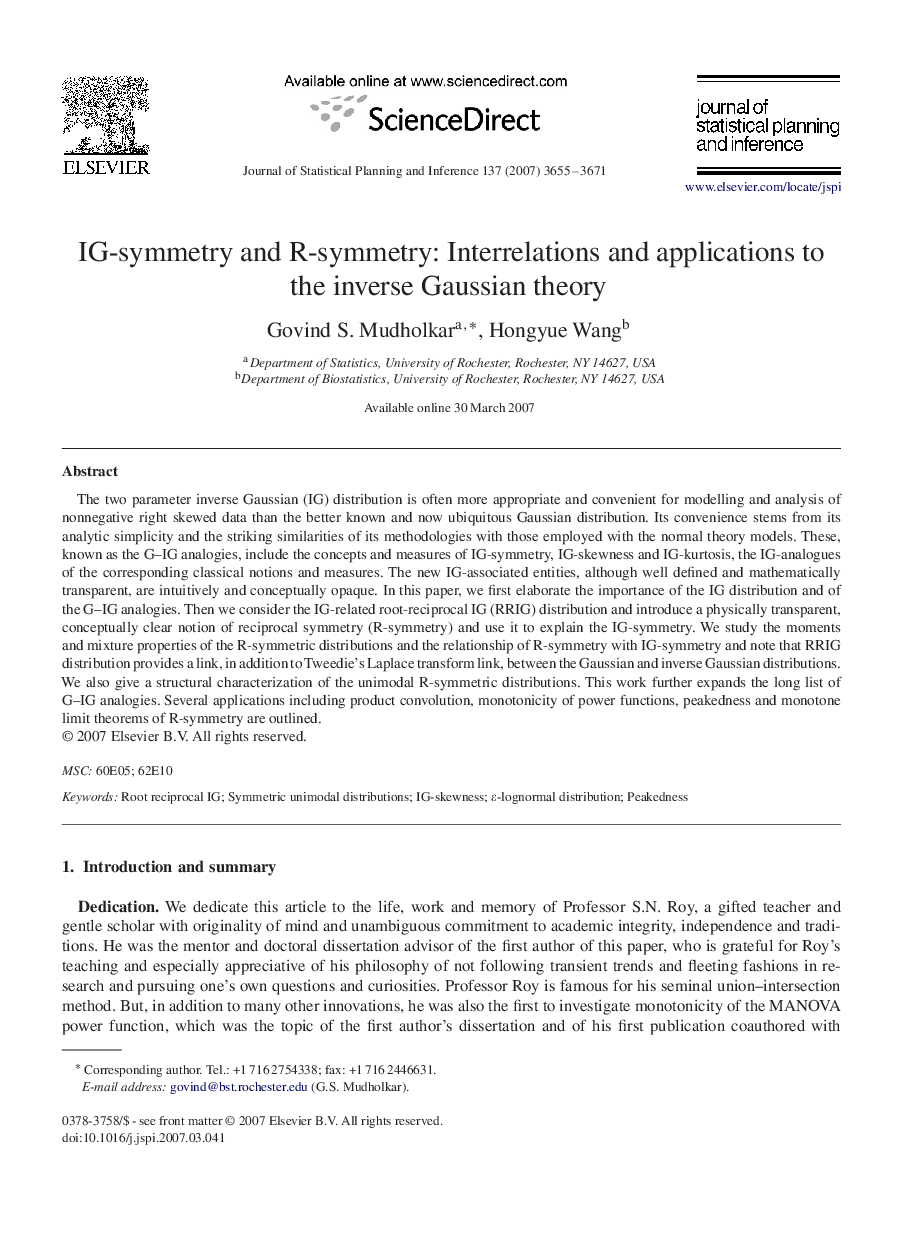| کد مقاله | کد نشریه | سال انتشار | مقاله انگلیسی | نسخه تمام متن |
|---|---|---|---|---|
| 1150610 | 957960 | 2007 | 17 صفحه PDF | دانلود رایگان |

The two parameter inverse Gaussian (IG) distribution is often more appropriate and convenient for modelling and analysis of nonnegative right skewed data than the better known and now ubiquitous Gaussian distribution. Its convenience stems from its analytic simplicity and the striking similarities of its methodologies with those employed with the normal theory models. These, known as the G–IG analogies, include the concepts and measures of IG-symmetry, IG-skewness and IG-kurtosis, the IG-analogues of the corresponding classical notions and measures. The new IG-associated entities, although well defined and mathematically transparent, are intuitively and conceptually opaque. In this paper, we first elaborate the importance of the IG distribution and of the G–IG analogies. Then we consider the IG-related root-reciprocal IG (RRIG) distribution and introduce a physically transparent, conceptually clear notion of reciprocal symmetry (R-symmetry) and use it to explain the IG-symmetry. We study the moments and mixture properties of the R-symmetric distributions and the relationship of R-symmetry with IG-symmetry and note that RRIG distribution provides a link, in addition to Tweedie's Laplace transform link, between the Gaussian and inverse Gaussian distributions. We also give a structural characterization of the unimodal R-symmetric distributions. This work further expands the long list of G–IG analogies. Several applications including product convolution, monotonicity of power functions, peakedness and monotone limit theorems of R-symmetry are outlined.
Journal: Journal of Statistical Planning and Inference - Volume 137, Issue 11, 1 November 2007, Pages 3655–3671